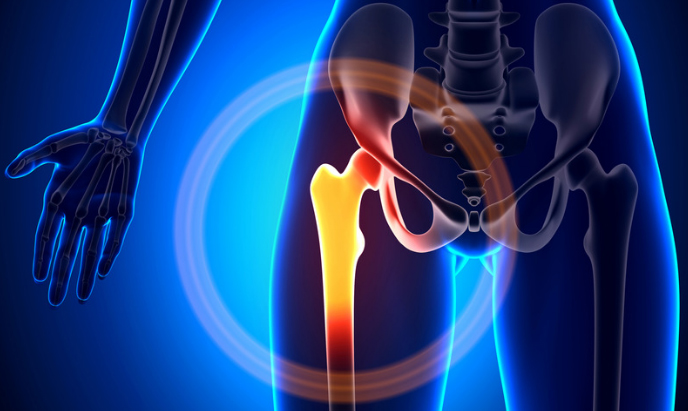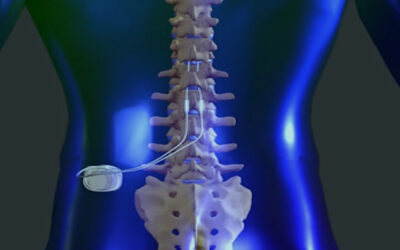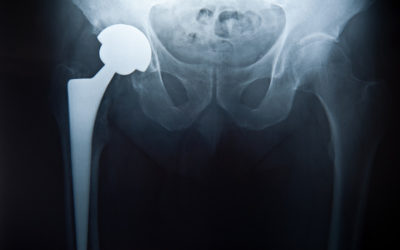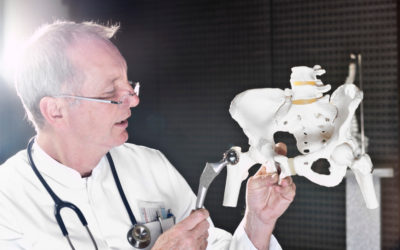the continuing controversy
Young women who desire a more functional hip replacement were recently dealt a large blow when the smaller sizes of the Birmingham Hip Resurfacing (BHR) device were withdrawn from the market by Smith Nephew Richards because the 10-year revision rate for women was higher than for men in most large registry analyses. (The major national registries are Australia, Combined Scandinavia, and Great Britain).
Joint implant registries estimate an overall failure rate for different implants when used by the average surgeon in a country. Specialist surgeons can typically perform better than these data suggest.
Hip resurfacing is a treatment for severe hip arthritis that results in a nearly normally functioning hip. Scientific studies demonstrate that patients walk more normally in gait studies, and are more likely to be able to resume full impact sports if they have a hip resurfacing rather than a traditional stemmed total hip replacement.
Generally women have smaller hip joints than men and require the smaller sized implants. There is no way to make the larger ones fit. The only alternative, if no smaller sized hip resurfacing implants are available, is to amputate the whole femoral head and then perform a standard total hip replacement (THR). I would estimate 70% of women and 20% of men will now not be able to choose a hip resurfacing arthroplasty (HRA).
It is difficult to know from the preoperative x-ray for certain what implant size will be needed. If patients are now scheduled for a BHR, they may end up with a standard stemmed THR instead of a resurfacing once the surgeon has opened the hip and found that the hip requires a smaller size than they thought.
There is no doubt in young men. Resurfacing is more functional and more durable. All men under 60 should have resurfacing if there were enough qualified surgeons available.
In women there is a dilemma: Do you choose a more functional hip that has a higher chance of failure by 10 years? Unfortunately women are loosing the opportunity to decide for themselves. The decision is being made for them by implant companies and the policies promulgated by the FDA. On the other hand, the failure gap between men and women is much lower in the hands of experienced resurfacing surgeons (than in registry data) My data now shows a 98% 8-year implant survivorship in women. Very few THR studies can match this in young patients.
Men requiring smaller bearing sizes and women desiring HRA have several options:
- Leave the country for surgery. The Conserve Plus was withdrawn from the US market because of our overly litigious environment after Microport, a Chinese company, bought Wright Medical. This implant has an excellent track record. Just before being sold they released an improved acetabular component that increased the coverage arc of all acetabular sizes to 170 degrees, which addressed the problems with smaller implant sizes. It is still available worldwide, but the company will no longer sell it in the US.
- See Dr. James Pritchett (Seattle) who performs a HRA with a ceramic on polyethylene device. The socket component is thicker than metal bearing implants. Therefore, implanting these requires more bone removal. Also previous results with standard polyethylene in the 1970s was poor. Cross linked polyethylene has not yet been adequately tested, but shows promise in preliminary testing. Currently cross linked polyethylene is not available for resurfacing.
- I still perform HRA using Biomet metal bearing implants for all patients. I have similar results in men and women and also perform resurfacing in patients with difficult deformities. I have performed over 3700 HRA with Biomet implants since 2005 with an excellent track record. Results are published on my website.
What is the problem with HRA in women?
10-year implant survivorship in young men is superior for HRA as compared to THR. Implant survivorship in women and men with smaller bearings is lower than THR in large registry studies.
Implant survivorship is not the only criterion that should be used to decide whether THR or HRA is best. Furthermore only the patient and their surgeon should make the decision as to which operation is best for the patient. The government, insurance companies, hospitals are not qualified to make this decision. Orthopedic societies also should not make blanket policies, because they are not the treating physician and they are typically controlled by a group of surgeons who have strong biases of their own. Surgeons who politically control these societies are well-respected, but do not necessarily have greater knowledge or skills than any other surgeon.
If, based on registry data, HRA should be made unavailable to women, then by the same reasoning THR should be made unavailable to young men under 60. Neither of these make sense, the decision in each case should be made by the informed patient with the guidance of their chosen surgeon. Surgeons need to keep accurate data and inform patients of their track record with different procedures. My 8-year implant survivorship with the Biomet uncemented resurfacing is 99% for men and 98% for women in over 3000 cases.
Why do women have a higher failure rate with HRA as compared to men?
the answer is multifactorial.
- Dysplasia is much more common in young women with end stage hip arthritis. Both THR and HRA have worse outcomes for dysplasia. A direct comparison of THR vs HRA has never been done for dysplasia patients. Before 2008 I had a 82% 8-year implant survivorship rate for dysplasia now I have a 99% 8-year rate. Problem solved. I have not seen any comparable results for THR.
- Adverse Wear Related Failures (AWRF) are more common with smaller implant sizes. Women require the smaller sizes. We have shown that AWRF can be avoided by proper acetabular component positioning. Prior to 2009 we had a 1% 10-year rate of AWRF; I have not had a single case of AWRF since 2009 in over 2000 consecutive cases. Problem solved.
- Failure of Bone Ingrowth of acetabular component is more common for severely deformed sockets (such as some dysplasia cases). This was my most common failure mode in dysplasia cases previously. In 2007 the Biomet Trispike Magnum was released. This implant has spikes for supplemental fixation. I use it in the worst 5% of Dysplasia cases. I have had no failures of fixation in any dysplasia cases since 2007. problem solved.
- Femoral neck fracture occurs more commonly in patients with weaker bone. fracture only occurs in the first 6 months after surgery. Women have weaker bone. Since 2007 we have been measuring bone density on all patients and use this to adjust postoperative management. We have had no femoral neck fractures in 2000 consecutive cases since 2009. problem solved.
- Uncemented femoral components have eliminated late loosening as a failure mode up to 8 years so far. this has improved results in men and women.
advantages of hip resurfacing:
- Better implant survivorship in young patients. women now have very similar results as men. Hip resurfacing done by an expert is more durable than THR for men and women.
- Better functional outcome. Impact sports are much more commonly possible after resurfacing. Also, formal gait lab studies always show more normal function for resurfacing. If you want to play sports, you are much more likely to do so with a resurfacing.
- Better stability. Dislocation rates are much lower for resurfacing because biomechanically a resurfaced hip is closer to a normal hip. In THR the bearing size is artificially smaller, leading to a higher risk of dislocation. With HRA there are no worries with extreme range of motion activities such as yoga, gymnastics or kayaking.
- Better patient survivorship. Two large studies based on the British implant registry have shown that resurfacing patients are much more likely to be alive at 5 and 10 years after surgery than age, gender and health status matched groups of patients who receive THR. Resurfacing patients can tolerate more vigorous exercise which may keep them healthier and alive longer.
- No thigh pain. 3-5% of THR patients have thigh pain due to irritation from the stem. This does not occur in HRA. This may be the reason that function is generally poorer with THR.
- Bone preservation. Much less bone is removed from the femoral side with resurfacing. Socket side bone removal is the same for both procedures. Removing a well-fixed femoral THR stem can require splitting the top of the femur, a resurfacing is removed by cutting the neck off, just as one does in a primary THR operation. Bone preservation in young patients leaves them better future options.
- Philosophical. If you have lost your cartilage layer, why not just replace it with metal and leave the hip as close to a natural hip as possible? Amputating the head and neck, driving a spike into your femoral shaft, and leaving you with a biomechanically unsound smaller hip bearing just doesn’t seem right.
disadvantages of hip resurfacing:
- technically difficult. it takes a few hundred cases to master. some surgeons just don’t have the ability to take this on. Most surgeons learn THR in residency, few learn resurfacing. Now surgeons are scared to learn because of all of the misinformation about adverse wear problems.
- Adverse wear related failure. This is the main argument against it by THR advocates. This is totally preventable by proper implant positioning. I have had no cases of AWRF in over 2000 consecutive cases since 2009.
Total Hip replacement has been called “the operation of the century” because of its dramatic impact on society. But that was the 20th century. Hip resurfacing is the operation for the 21st century!
Write to your congressman and let him/her know that the FDAs needs to lighten up. just because some surgeons have difficulty with resurfacing, does not mean that these implants should be removed from the market. Resurfacing has been shown to result in a more normal functioning hip reconstruction than THR. Failure rates have been higher in women in the past. But we have discovered the causes for these higher failure rates and have addressed them. There is no reason to abandon resurfacing in women. In the hands of experienced resurfacing surgeons the failure rate in women now approaches that of men. Write to Smith Nephew Richards and let them know that you are disappointed that they removed BHR implants for women from the market. Women want a high functioning hip option as well.
If implant companies modified the smaller implant sizes to increase the coverage arc to 165 degrees, AWRF would rarely occur, even in the hands of less skilled surgeons. If the FDA did not make the approval process so onerous and costly, implant companies might consider taking this approach. this would be a better approach than just withdrawing implants from the market.




